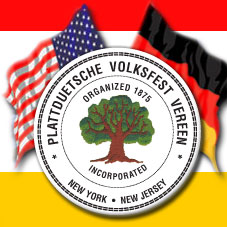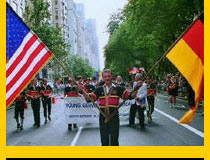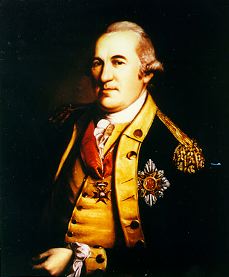








| JOIN PVV NOW! |
| 142nd Annual Volksfest |
| NYC Steuben Parade |
 |
Steuben Parade
Parade History
The Steuben Parade is named for Baron Frederick Wilhelm von Steuben who came to the American colonies as a volunteer, offering his services to the embattled General George Washington. General von Steuben personally drilled troops, instilling in them much needed inspiration, confidence and competence which was the decisive factor in achieving ultimate victory in the Revolutionary War.
Steuben Pararde Official Website

Baron Frederick Wilhelm von Steuben
The First Parade
Leaders in the German-American community were keenly aware that many immigrant groups in the Metropolitan Area expressed their pride in their heritage with an annual parade. Why not the German ethnics, one of the most valued and important immigrant groups? After a successful parade in 1957 on Myrtle Avenue in Ridgewood in the predominantly German-American community, sufficient momentum was gained to stage the first German-American Parade on Manhattan's fabulous Fifth Avenue, September 20, 1958. Support for the Parade was outstanding. The Parade lasted two hours, a most impressive display of ethnic culture, pride and heritage, while thousands of marchers, floats and bands were enthusiastically cheered by over 155,000 onlookers along the way.
The Cornflower
The Cornflower, the floral emblem of the Steuben Parade, has a significance far beyond the event with which it has become inseparably identified. It is in fact the ethnic symbol of the German-American community. The idea of such an association goes back before the inception of the Steuben parade. It was first suggested by Walter Rothaug, founding member of the Steuben Society of America, and the idea was introduced at a public event conducted by the Society many years ago.
But why the Cornflower? There are several reasons. This simple flower is found in the grain fields throughout the old country, mingled with the ripening grain, side by side with the red poppy, brightening the countryside everywhere throughout the long summer months. Hence the name "Kornblume" or Cornflower. Although it is not a native flower, it is certainly well-known in the United States under the name of "Bachelor's Button" or "Bluebottle" and widely cultivated in gardens. Blue symbolizes truth and loyalty -- qualities which have long been ascribed to the Germanic people. Sentimental references are even found in history books. The Cornflower was the favorite flower of "Kaiser" Wilhelm I of the Second Empire and that of the charming "Kaiserin" Augusta Victoria.
(c) 2016 The Plattduetsche Volksfest Vereen of New York & New Jersey (PVV). All rights reserved.

